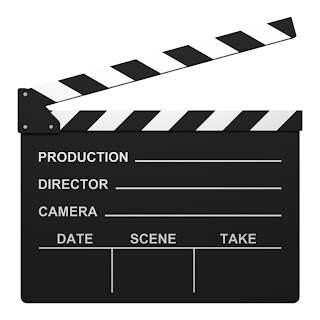If you are just starting out in film making and your equipment may not be much, I would recommend creating music videos instead of films simple because you don't have to worry about audio. The audio from the camera is muted in your final video you will be hearing the actual music track.- This is all done in editing later. Once you understand the process of editing you can move into film making. I feel this is a great way to get familiar with the editing program.
Before you start filming your music video you may want to brainstorm on how you want the video to look. I usually remake a video the way I see it. It may not always look like most people expect, they usually turn out pretty crazy.
For the most part I film 3 separate scenes and then later blend them together in editing.
For example (see below)
There are 3 scene in this video. So I have 3 video tracks and a music track in my time line in Sony Vegas Pro.
Once you have your scenes planned, you basically film your actor lip singing to the actual track, like I mentioned before it doesn't matter how it sounds since you won't hear this in the finish product. (see below time line screen shot)
So in this case we have 3 scenes and I have muted the tracks. The point of having the music playing when you are filming is so that later in editing you can hear the song and sync it up with the actual music track. plus the music playing on set helps the actor know when to move their lips.
If you aren't familiar with the time line the track that is on top plays firsts. (see below)
when you start adding your videos into Sony Vegas import one scene at a time and the actual music track. Line up the video to the song by moving the video to the left or right and previewing it until it sounds in sync. usually you can tell because the song has a echo when you play it back in preview.
once its in sync you can muted your track.
then import the next one and so on. When you have imported your second video enter it above the first video so its shown first, so then you can see it when you are syncing it to the audio.
Once all 3 of your scenes are in the time line and you have them muted you can begin editing it.
Like I said whatever track is on top will be the only track that will show when you preview it. So what we need to do is cut parts of the first track out so the track below it will be shown.
See images to cut clip
You can continue this until you have everything the way you want it.






























